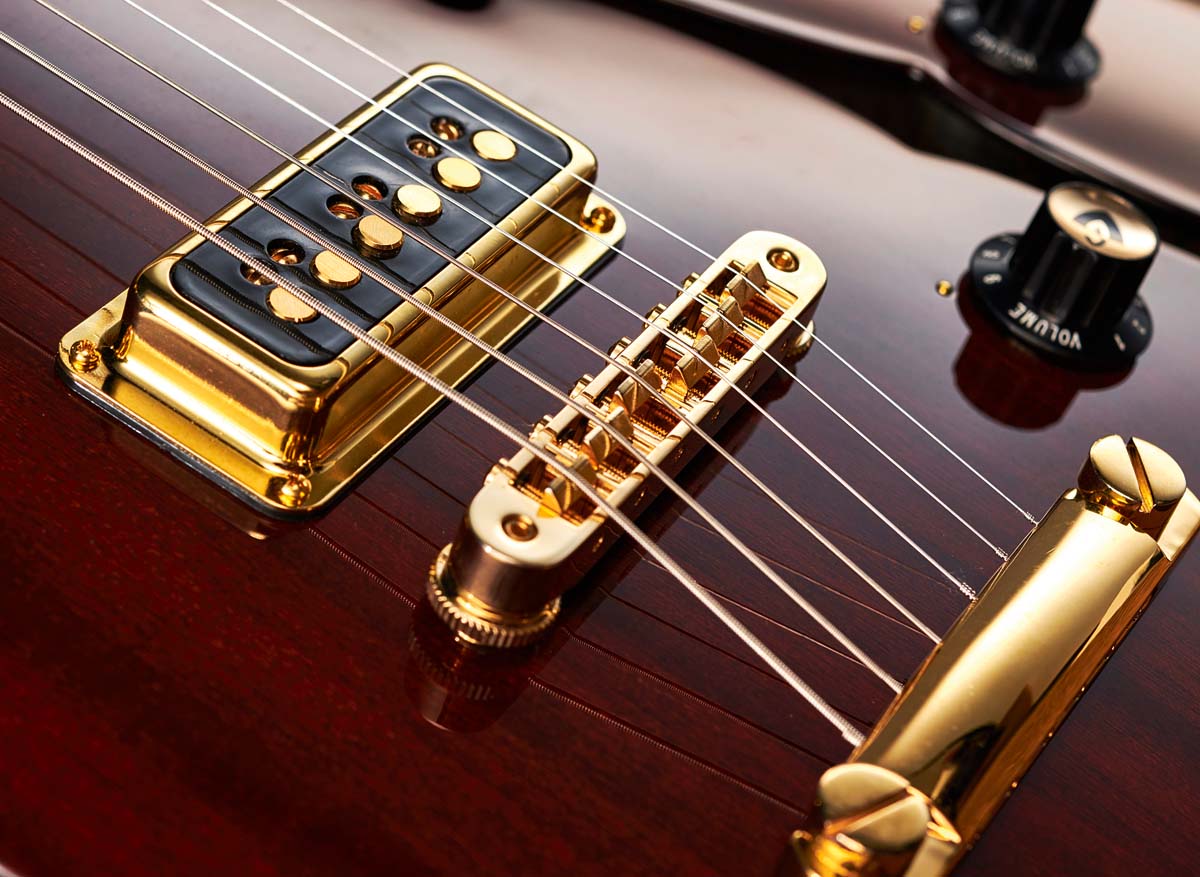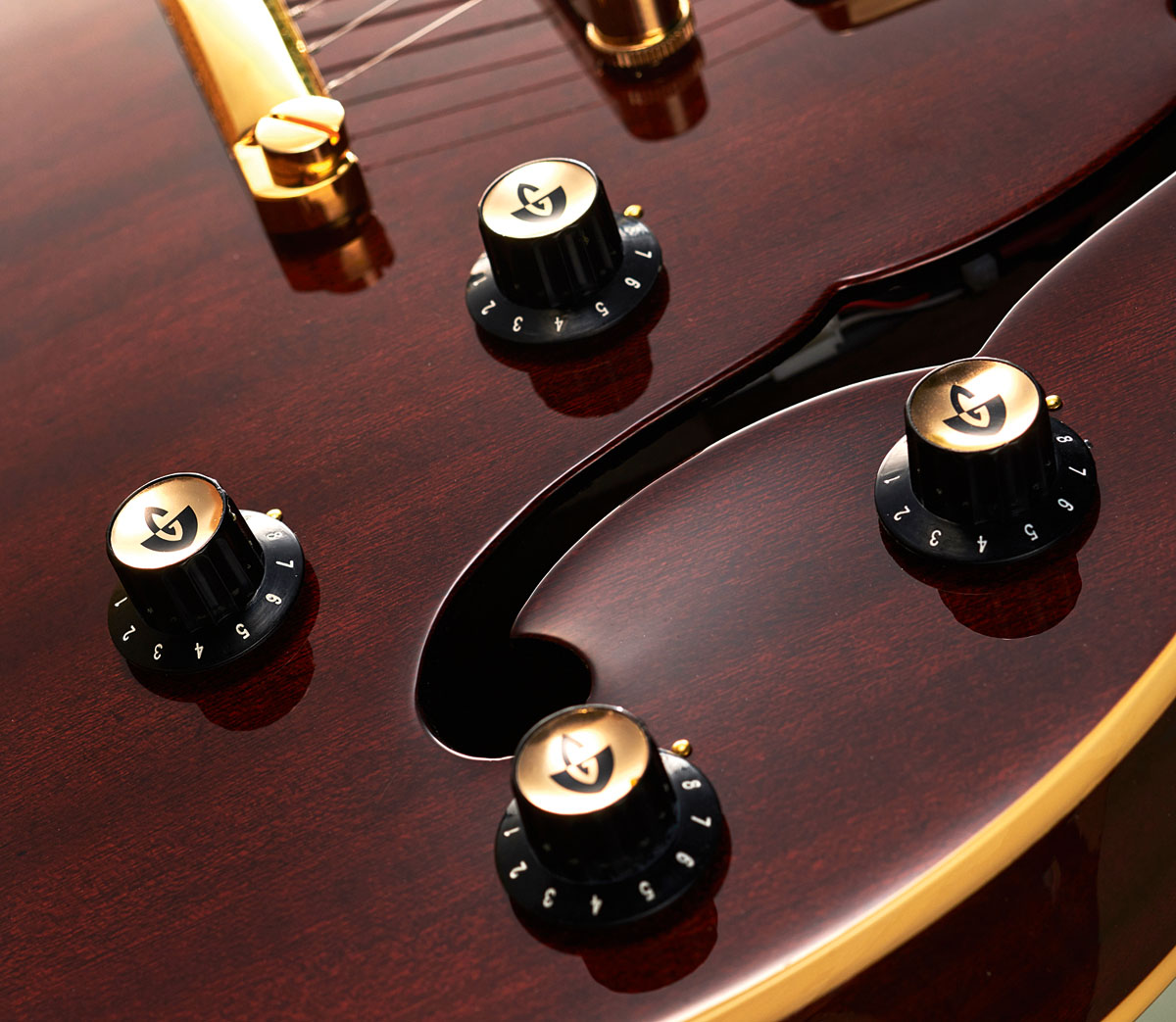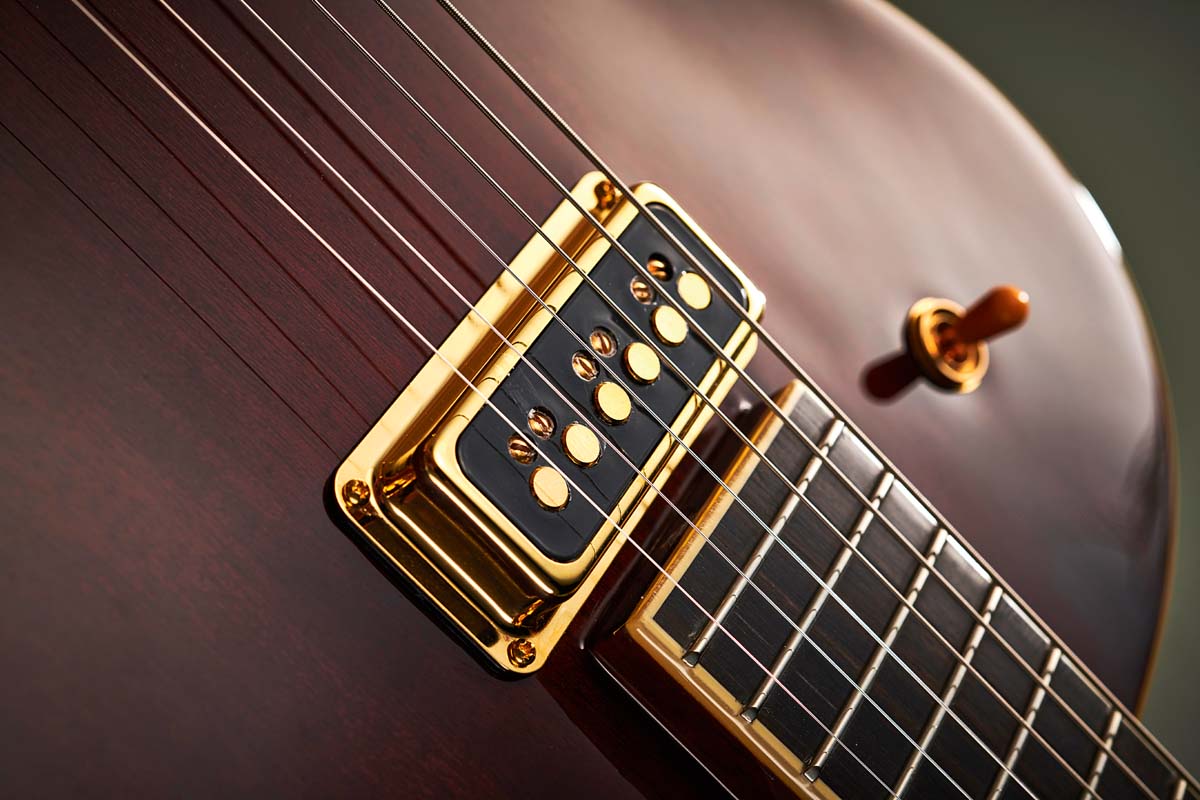Guitar World Verdict
A retro crowdpleaser offering a slightly more premium feel than the standard Starfire II, the Dynasonic is a classy, good value choice for jazz cats and rock-and-rollers alike.
Pros
- +
Nicely built repro from yesteryear.
- +
New single-coil pickup design that’s based on a '40s classic.
- +
Evocative sounds with strong output.
Cons
- -
Tone freaks will bemoan the ‘cheap’ Dynasonics.
- -
No case/gigbag or lefty.
- -
One colour.
You can trust Guitar World
Guild’s Newark St range isn’t intended to slavishly reissue instruments from yesteryear, but glancing through the now expansive range of hollow, semi-hollow and solidbody electric guitar designs you find yourself in a near parallel universe.
Not only were the majority of designs originally issued in the late 50s and 60s, but Guild – or rather its owner, the Cordoba Music Group – seems unrushed to launch new models.
The Starfire I, II and III models date back to 1960, renamed versions of the prior T-100 ‘Slim Jim’. The Starfire II with LB-1 mini-humbuckers joined the Newark St line-up in 2016 as the most affordable stripped-down model in the contemporary Semi-Hollow range.
Announced last year is this latest addition that swaps the humbuckers for DeArmond Dynasonics and comes in a deep Royal Brown gloss finish with gold-plated hardware and a slightly higher price. Even so, with no pickguard, understated it remains.
With its lightweight, mainly hollow design, the II ST Dynasonic sits nicely between a true hollowbody and a centre-blocked semi
What it certainly isn’t is a modern downsized thinline. It’s a 416mm (16.4-inch) wide single-cut with that thinline depth at the rim of 48mm. Guild groups it in its Semi-Hollow section, along with centreblocked guitars such as the Starfire V, whereas the III, with its dual top braces, is classed as a Hollowbody.
The Starfire II is a bit of a halfway house: to mount the standard tune-o-matic and stud tailpiece (the ‘ST’ of its name) there are actually two stacked wood blocks that support this real estate and connect the top and back. There’s no other bracing that we can see or feel. It means that it’s a lightweight guitar – a partial semi, if you like.

Like the standard II ST, this Dynasonic version goes for a classic two-volume/two-control setup with shoulder-placed toggle. It really is only the pickups that have changed as far as the electric side is concerned. The DeArmond brand is now owned by Cordoba, and this is the first new electric design – the Tone Boss acoustic soundhole pickup has been with us for a couple of years.
As we documented recently in our Pickup Lines column (see issue 448), the Dynasonic started life in the 1940s, originally called the Model 2000 and used by Epiphone, Martin and most famously Gretsch, who originally called it the Fidelatone and later the Dynasonic.
Listening through both clean Vox- and Fender-style combos we seem to have dropped right back into the 60s or before
Guild also used the Model 2000 from 1961, according to Guild historian Hans Moust. It was the same pickup that Gretsch had famously used for nearly a decade before the arrival of the Filter’Tron, but where Guild used a white-topped version, Gretsch used a black top.
Back to the present, then, and this contemporary version plays a bit hard and fast with the design. Yes, it looks like the real deal, but where that original design used fully height-adjustable magnetic polepieces, this current design has a very different and simplified architecture with rather limited height adjustment of the individual magnetic poles.
Feel & Sounds
With its lightweight, thin and mainly hollow design, the Starfire II ST Dynasonic sits nicely between a true hollowbody and a centre-blocked semi. The acoustic response is roomy and with a relatively slim depth’d, quite mass-market neck and tidy fretting from a generous size for the style, there’s nothing to worry about.
Obviously, the ‘modern’ tune-o-matic means intonation can be precisely set, while the stud tailpiece allows a little flexibility, particularly if you want to raise it a little to ‘soften’ the feel of heavier strings.

There’s nothing fancy here, just a standard twin-volume/twintone setup. The toggle switch pickup selector is mounted on the shoulder, which is very fast and convenient for a single-cut design such as this.

Unlike the standard Newark St Starfire II, we get a bound fingerboard here from an attractively striped ebony. It’s a good mainstream depth, too: 21.5mm at the 1st fret and 22.4mm by the 12th. The nut width on our sample is 43.1mm.

These DeArmond Dynasonic single coils are a “faithful reproduction of the original design, the first to feature adjustable polepieces originating in the 1940s”.
The individually adjustable Alnico V poles have less adjustment range than the originals. They are slightly hotter with measured DCRs of 8.49kohms at the bridge and 7.19k at the neck.
The sounds we hear plugged in are way less contemporary. The pickups, of course, are single coils, so they will pick up hum, but at least they’re hum-cancelling with both on – and that’s a good place to start.
Compared with an LB-1 equipped Starfire II, it’s certainly not chalk and cheese, but these Dynasonics have more percussion to the attack, they are less smooth and have a more hollowed, midlight voice.
The relationship with both on and subtle adjustments of the volume reap considerable rewards as ever, and listening through both clean Vox- and Fender-style combos we seem to have dropped right back into the 60s or before. ‘Character’ is the word with snap, twang and growl.
The solo pickup voices sound a little bigger – purer, if you like – the neck is plummy without being over thick and, relatively speaking, there’s an almost Telecaster-like steely high-end bite from the bridge. But, again, both the volume (which softens the attack) and the tone have considerable effect, in a good way.
We weren’t able to compare these Dynasonics with the real thing, or contemporary recreations such as TV Jones’s well-received T-Armonds, but we suspect these are a slightly different voice. You certainly have only limited adjustment of the polepieces (and none of the pickup itself ), and the middle two are slightly higher by design, meaning that the high E on the neck, for example, is a little soft – and there’s not too much you can do about it.
They do, however, seem a little more balanced than the LB-1 pair, which is no bad thing bearing in mind that limited height adjustment. But then that almost unpredictable response is part of the deal: it’s a different, very vintage-y voice.
Verdict
A smart addition to the slowly expanding Newark St line-up, this single-coil version of the Starfire II is a hugely enjoyable piece and fairly unique. Its thinline hollowbody style with its bridge block design produces a lightweight guitar that more than evokes the style of the 50s and 60s as the jazz age gave into to the tide of rock ’n’ roll.
And from defined lounge jazz to earthier roots rock and rockabilly, it covers considerable ground, proving a very valid alternative voice to the mini-humbucker-equipped standard Starfire II.
It’s a little more deluxe than the standard model and there’s a price hike, too, which begins to look a little inflated, without even a gigbag. That said, dealer prices should drop it enough to give you wiggle room to purchase a case. It’s a timepiece, sure, but with plenty of style.
Specs

- PRICE: £999
- ORIGIN: Korea
- TYPE: Single-cutaway hollowbody electric
- BODY: Laminated mahogany with bridge block
- NECK: Mahogany, Vintage Soft ‘U’ profile, glued-in
- SCALE LENGTH: 629mm (24.75”)
- NUT/WIDTH: Graph Tech NuBone/43.1mm
- FINGERBOARD: Ebony, pearloid dots, 241mm (9.5”) radius
- FRETS: 20, narrow jumbo
- HARDWARE: Gold-plated Adjusto-Matic bridge with stud tailpiece, Grover Sta-Tite open-backed tuners
- STRING SPACING, BRIDGE: 52mm
- ELECTRICS: 2x DeArmond Dynasonic single coils, 3-way toggle pickup selector switch, individual pickup volume and tone controls
- WEIGHT (kg/lb): 2.78/6.12
- RANGE OPTIONS: The Starfire III has the same thin single-cut design but with Bigsby, LB-1 humbuckers and wooden-foot tune-o-matic bridge from £1,090. The double-cut Starfires start with the IV from £1,090. DeArmond Dynasonic pickups cost £75 (nickel) and £80 (gold)
- LEFT-HANDERS: No
- FINISHES: Royal Brown (Gloss polyurethane)
- CONTACT: Guild Guitars

Dave Burrluck is one of the world’s most experienced guitar journalists, who started writing back in the '80s for International Musician and Recording World, co-founded The Guitar Magazine and has been the Gear Reviews Editor of Guitarist magazine for the past two decades. Along the way, Dave has been the sole author of The PRS Guitar Book and The Player's Guide to Guitar Maintenance as well as contributing to numerous other books on the electric guitar. Dave is an active gigging and recording musician and still finds time to make, repair and mod guitars, not least for Guitarist’s The Mod Squad.
“What blew me away was that everyone wanted the curly maple top. People were calling, saying, ‘I’ve got to have the bird inlays’”: Paul Reed Smith on raising the Standard 24, finally cracking the noise-free guitar and why John Sykes is a tone hero
“It combines unique aesthetics with modern playability and impressive tone, creating a Firebird unlike any I’ve had the pleasure of playing before”: Gibson Firebird Platypus review











